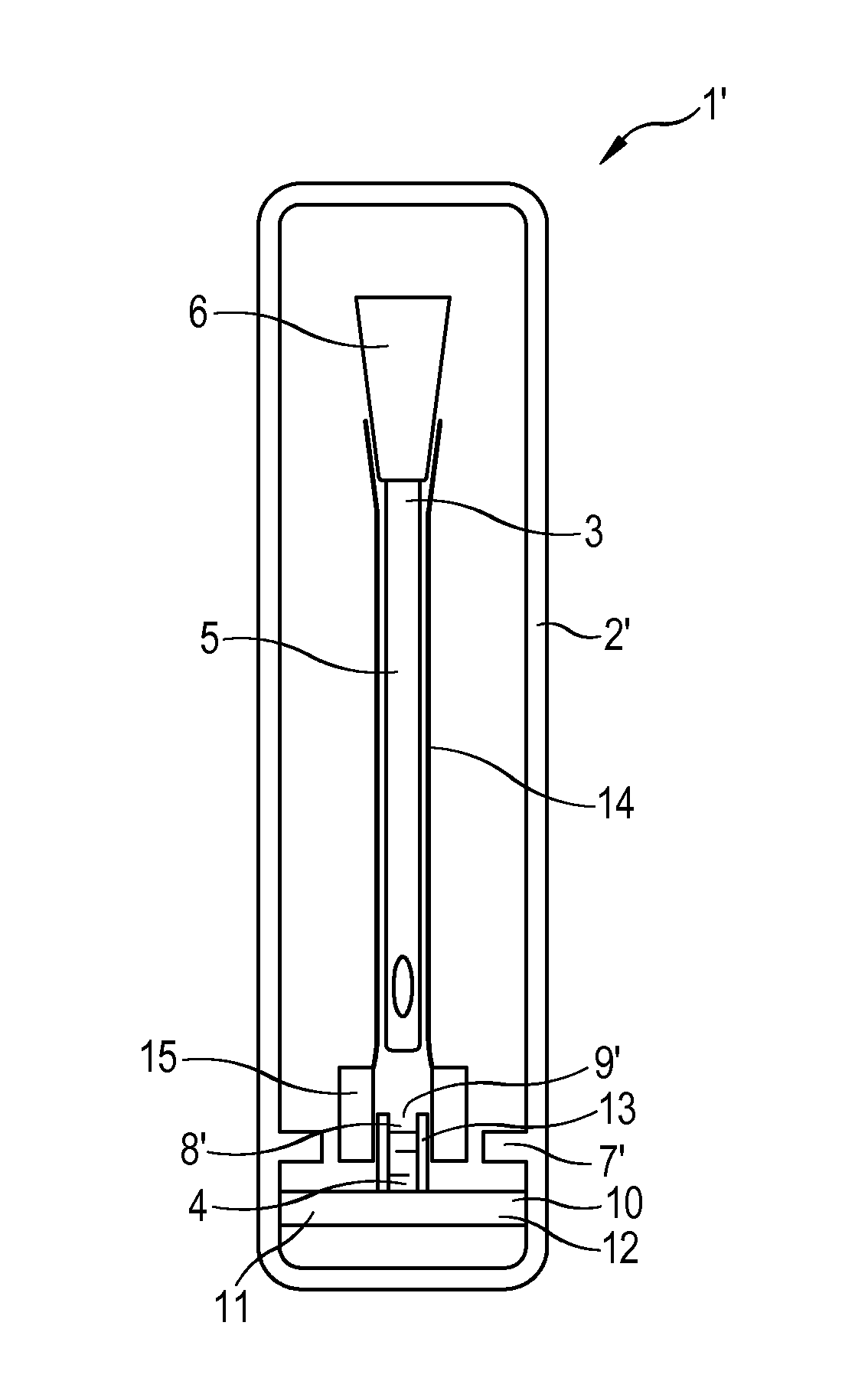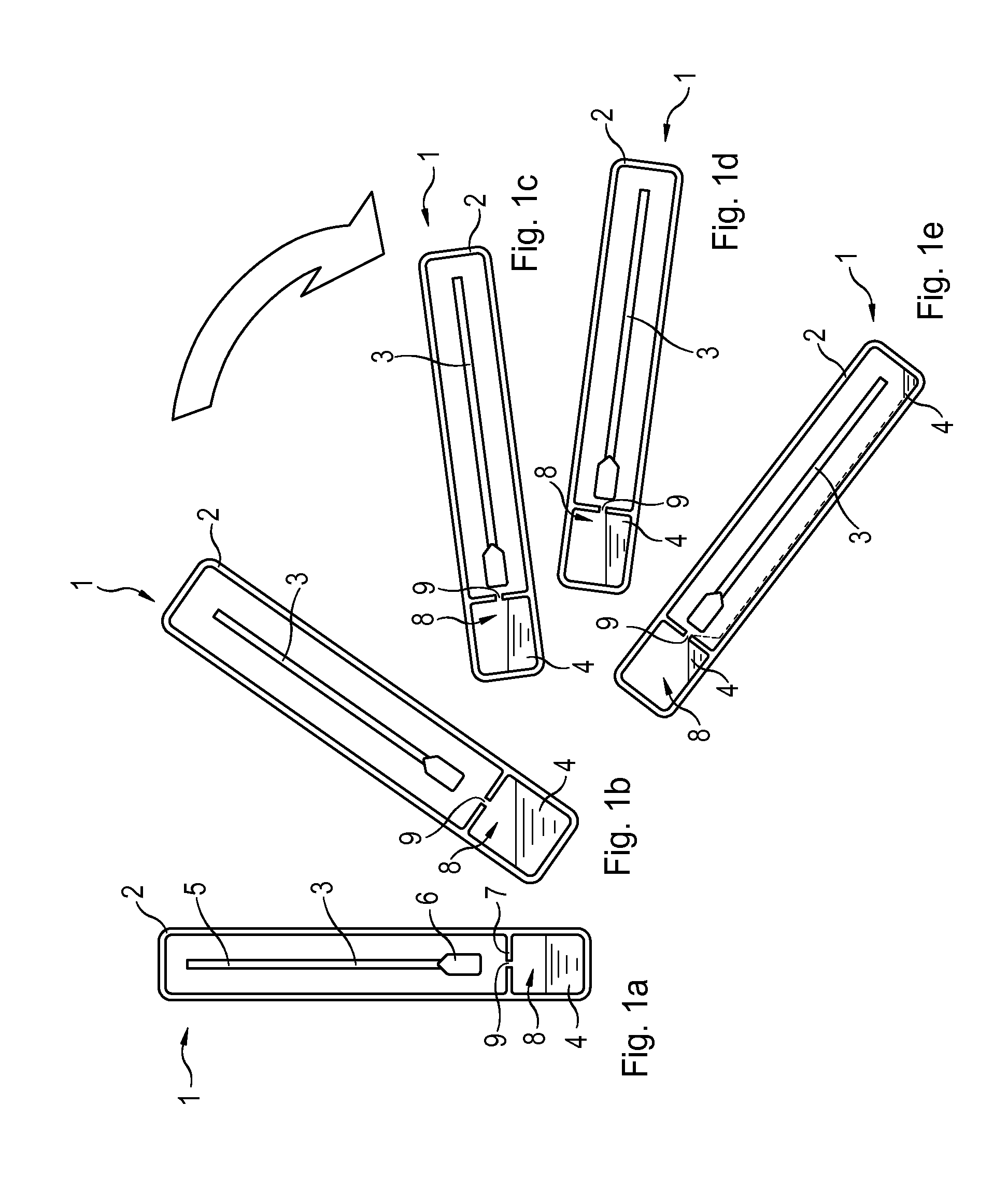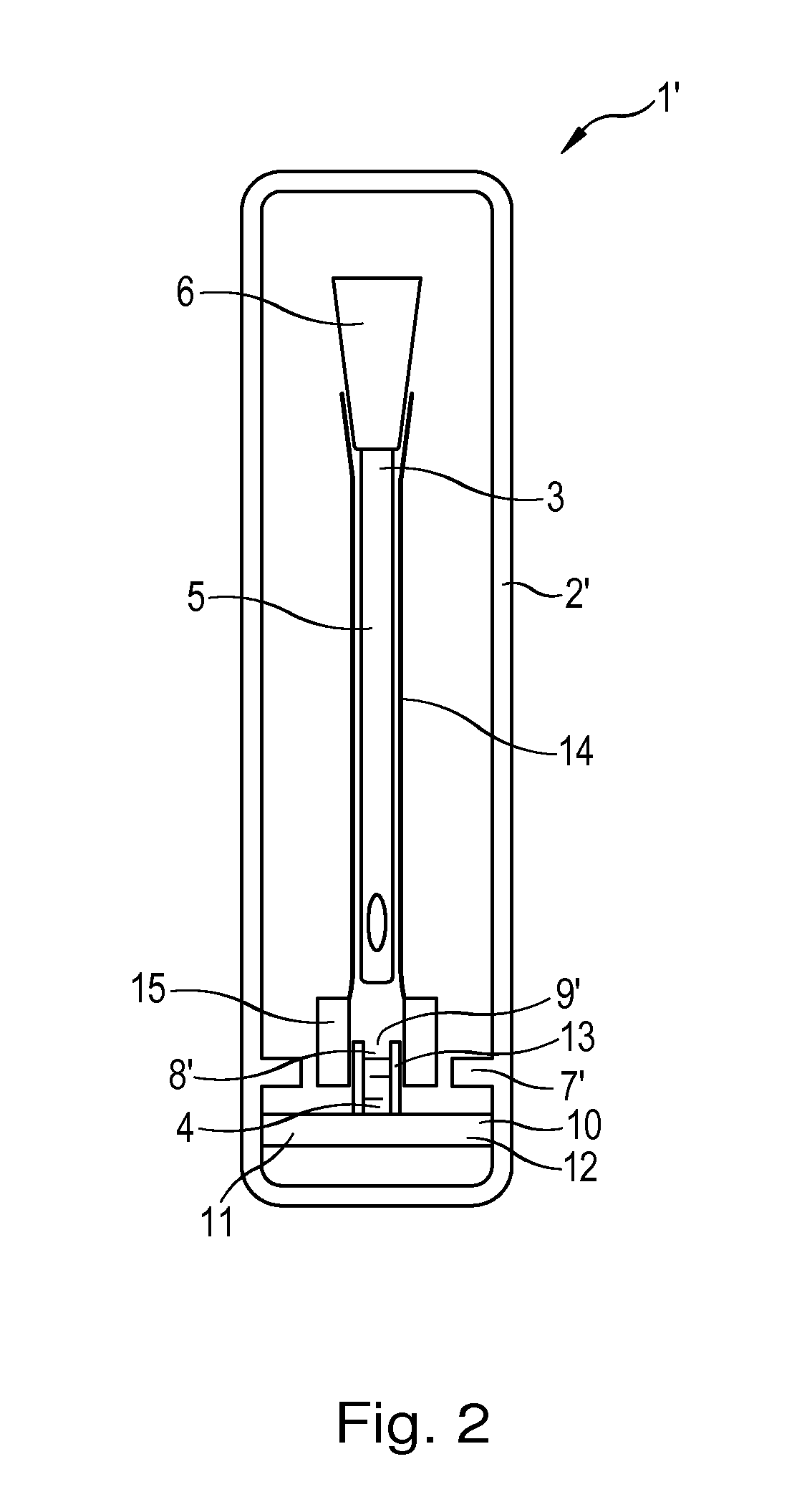Method for making a ready-to-use catheter assembly and ready-to-use-catheter assembly
a technology of ready-to-use catheter and assembly, which is applied in the direction of catheters, containers, applications, etc., can solve the problems of affecting the lubricity and dry out time of the catheter assembly, reducing the amount of wetting fluid needed, and affecting the effect of coating performance and coating performan
- Summary
- Abstract
- Description
- Claims
- Application Information
AI Technical Summary
Benefits of technology
Problems solved by technology
Method used
Image
Examples
first embodiment
[0032]FIG. 1a shows a ready-to-use catheter assembly 1. The ready-to-use catheter assembly 1 comprises a catheter package 2, a catheter 3 arranged in the catheter package 2 and a wetting fluid 4 which is also arranged in the catheter package 2. The catheter package 2 is made of a material that has a low moisture transmission such that the wetting fluid 4 is retained within the package 2. Examples for such materials with low moisture transmission are multi-layered polymeric films and aluminum foils. Due to the use of these materials, the wetting fluid is retained within the package for a time span of up to five years and typically 36 months. It is thus ensured that the ready-to-use catheter assembly has a suitable product shelf life. Furthermore, due to the very low moisture transmission of the package material, the amount of wetting fluid 4 needed can be minimized, because nearly no wetting fluid can escape from the package. As there is only a small amount of wetting fluid in the pa...
second embodiment
[0036]FIG. 2 shows a ready-to-use catheter assembly 1′. This catheter assembly 1′ basically corresponds to the catheter assembly as already described. For the same parts, the same reference numbers are used. In the following, the differences are described.
[0037]The ready-to-use catheter assembly 1′ also comprises a catheter package 2′, a catheter 3 which is arranged in the catheter package 2′ and a wetting fluid 4, which is also arranged in the catheter package 2′. The catheter package 2′ is made of a material with low moisture transmission as described above. Furthermore, an element 10 is arranged in the package 2′. The element 10 has the shape of a T and is called T-piece. The two arms of the T are connected to the package 2′ in order to fix the element 10 in the package 2′. The leg of the T 13 is hollow and forms the compartment 8′ for the wetting fluid 4. In FIG. 2, the ready-to-use catheter assembly 1′ is shown in a first condition which is maintained before and during steriliz...
PUM
| Property | Measurement | Unit |
|---|---|---|
| time | aaaaa | aaaaa |
| time | aaaaa | aaaaa |
| time | aaaaa | aaaaa |
Abstract
Description
Claims
Application Information
 Login to View More
Login to View More - R&D
- Intellectual Property
- Life Sciences
- Materials
- Tech Scout
- Unparalleled Data Quality
- Higher Quality Content
- 60% Fewer Hallucinations
Browse by: Latest US Patents, China's latest patents, Technical Efficacy Thesaurus, Application Domain, Technology Topic, Popular Technical Reports.
© 2025 PatSnap. All rights reserved.Legal|Privacy policy|Modern Slavery Act Transparency Statement|Sitemap|About US| Contact US: help@patsnap.com



